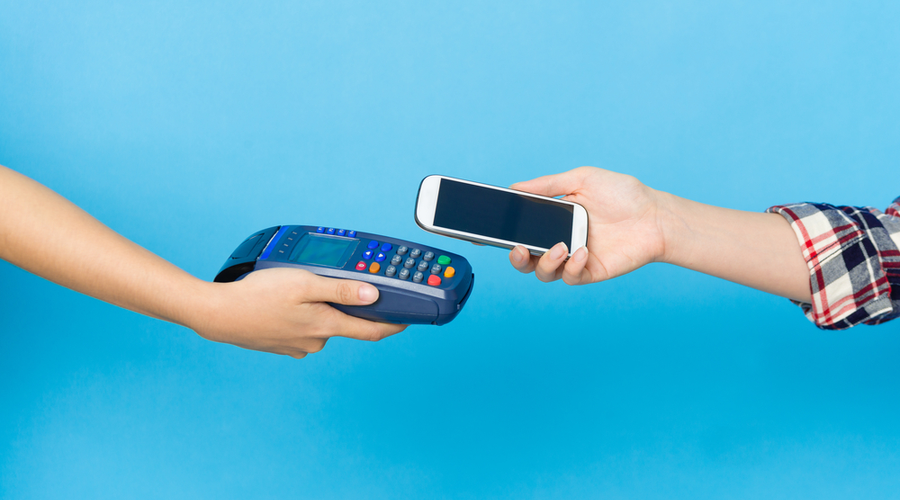New data from two firms demonstrates that the Covid-19 pandemic spurred the growth of contactless mobile payments—and that the technology is here to stay.
Contactless mobile payments typically work in one of two ways. The first is by using Near Field Communication, or NFC. NFC uses radio waves to send information between two compatible devices. Other mobile payment options use QR codes displayed on the phone screen, which are scanned to trigger a bank transfer.
The analyst firm eMarketer notes that the number of Americans using mobile payments grew by 29 percent in 2020, and now 101.2 million Americans use their smartphones to make contactless payments in-store.
“Many consumers tried mobile wallets at point-of-sale for the first time last year to avoid using paper currency and debit and credit cards,” said Oscar Orozco, a forecasting analyst at eMarketer. Right now, millennials and Gen Z make up the biggest chunk of new mobile payment users, but eMarketer forecasts that by 2025, more than half of all smartphone users will use some sort of mobile payment. And by 2023, the annual spend per user will reach $3,000.
Apple Pay is currently the biggest player in the mobile payment game, with 43.9 million users, while competitor Google Pay has 25 million users.
[RELATED: Contactless Payment Methods: What Retail Pharmacies Should Know]
The Italian firm Finaria also reports that mobile payments are growing globally, with the market predicted to be worth $3.5 trillion worldwide by 2023. It notes that in addition to appeasing worries about germs during the coronavirus pandemic, consumers have adopted the technology because it means they no longer have to carry cash and don’t have to worry about their wallets being stolen.
Finaria also recognized that though the pandemic caused mobile payment adoption to spike, the technology had begun to catch on before coronavirus. In 2017, 298 million people were using mobile payment options. By 2019, that number had more than tripled to 901 million users.
The trend started in China, which still has the highest number of mobile payment users, but the United States has caught up to become the second-largest market for mobile payments. Finaria predicts the American market will grow by 49 percent to be worth nearly $700 billion in 2023.
One of the biggest barriers to mobile payment adoption, according to eMarketer, is that older consumers tend to find it difficult to set up their mobile wallet. Even when they do get it set up, they don’t use the app consistently.
Small businesses like independent pharmacies may find it difficult to adopt mobile payments because of technological barriers. Many mobile payment options require a special point-of-sale terminal, which means smaller businesses sometimes have to invest in costly upgrades to take advantage of mobile payments.
From the Magazine
This article was published in our quarterly print magazine, which covers relevant topics in greater depth featuring leading experts in the industry. Subscribe to receive the quarterly print issue in your mailbox. All registered independent pharmacies in the U.S. are eligible to receive a free subscription.
More articles from the June 2021 issue:
- Are independent pharmacies missing out on the fastest-growing segment of the pharmacy market?
- Why this pharmacy network only buys from one secondary wholesaler
- These are the front-end shoppers every pharmacy should know
- Five overlooked human resource issues for pharmacies (from an employment law attorney)
- How to increase OTC sales in an age of drive-thru and delivery
- Why pharmacies must offer mobile payment options
- How to make the most of your pharmacy technicians
- Principles for an effective pharmacy budget
An Independently Owned Organization Serving Independent Pharmacies
PBA Health is dedicated to helping independent pharmacies reach their full potential on the buy side of their business. The member-owned company serves independent pharmacies with group purchasing services, expert contract negotiations, proprietary purchasing tools, distribution services, and more.
An HDA member, PBA Health operates its own NABP-accredited (formerly VAWD) warehouse with more than 6,000 SKUs, including brands, generics, narcotics CII-CV, cold-storage products, and over-the-counter (OTC) products.
Want more pharmacy business tips and advice? Sign up for our e-newsletter.











